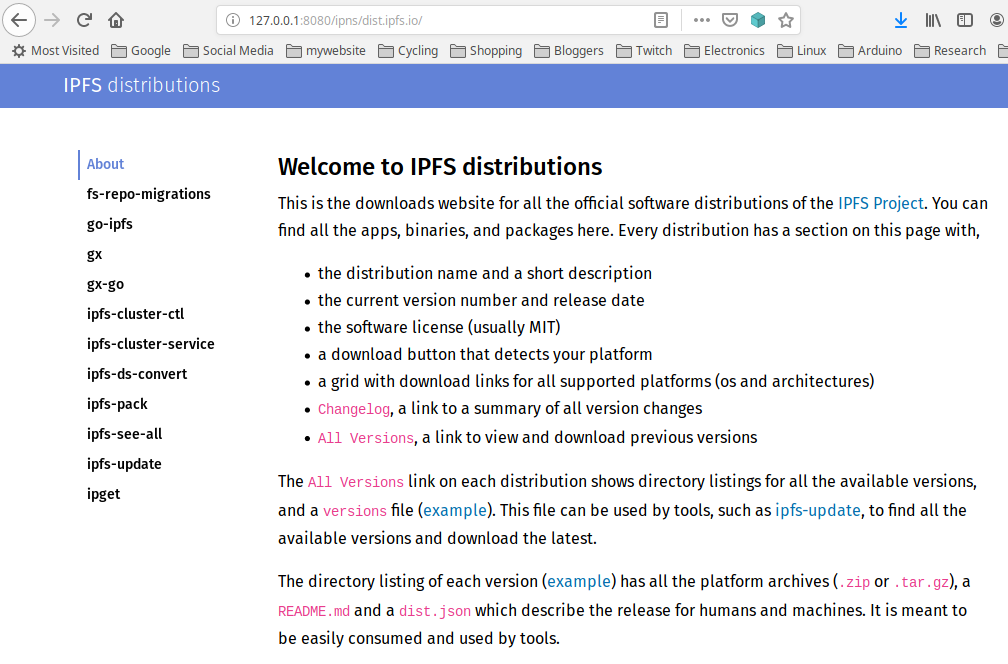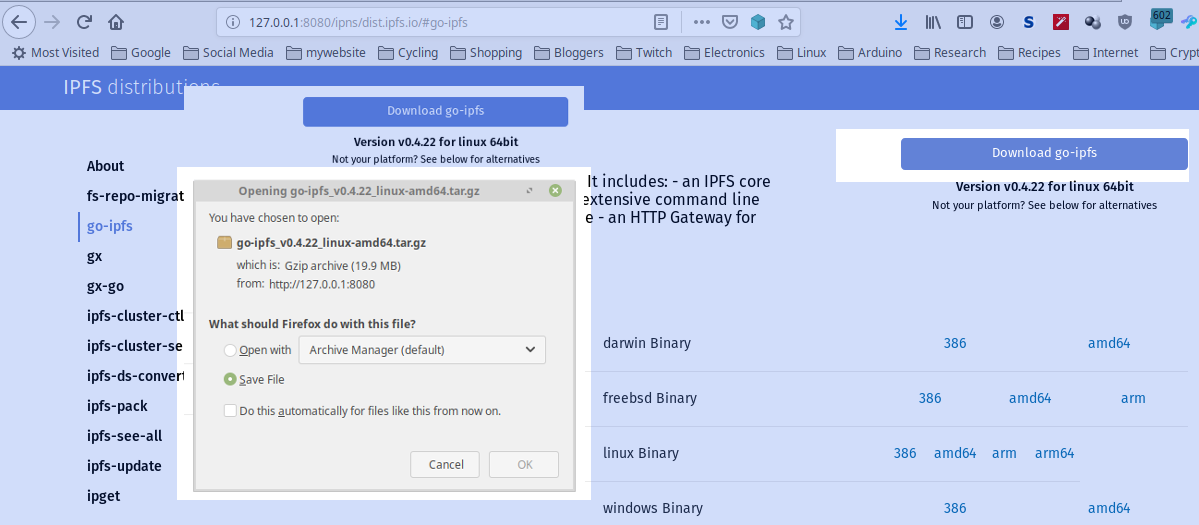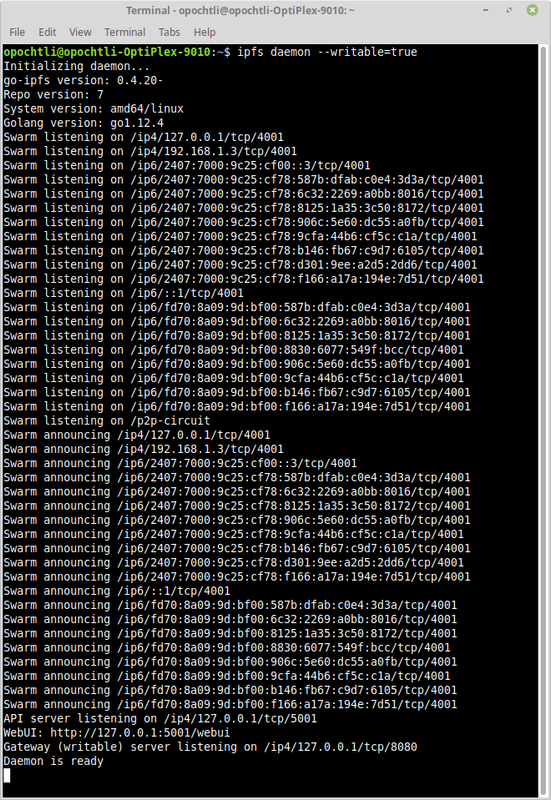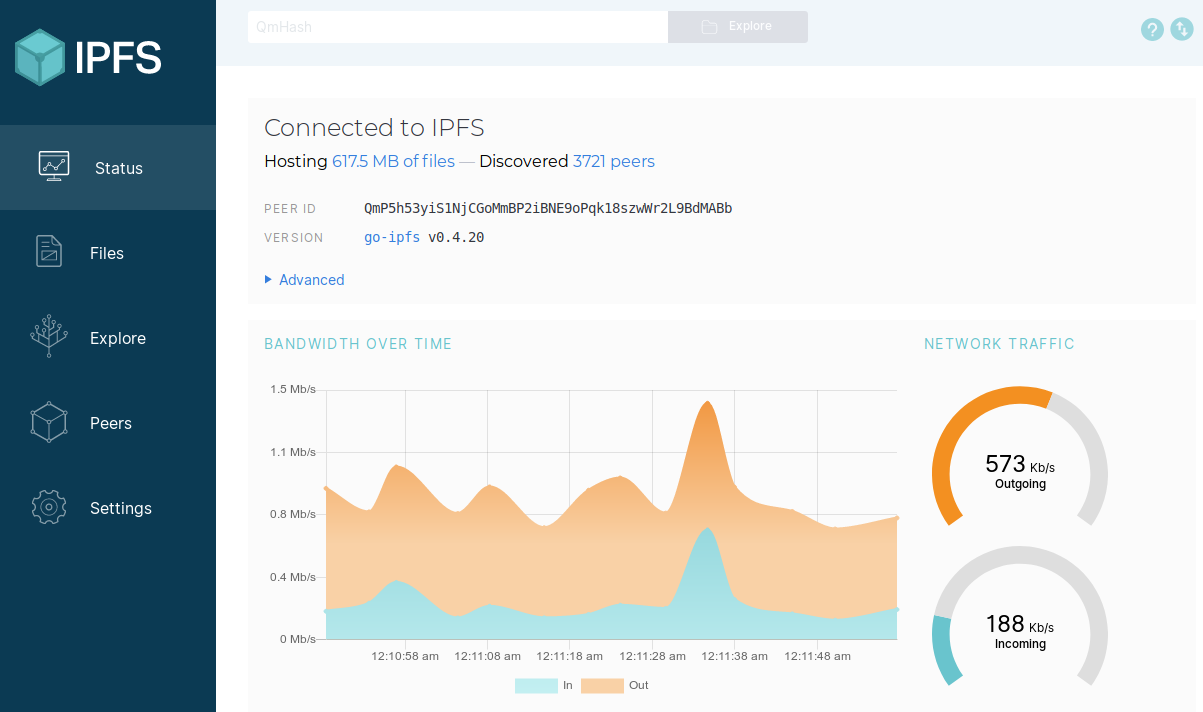I do have this installed and running well on my normal day to day computer, not that I really need to, but it was a good exercise to new technology and overcoming problems during the installation process. Ideally it should be on it's own "stand-alone" server, yet I still see it as some sort of global NAS type setup, it's hard for me to understand the concept at this stage... OK let's get started!
IPFS distributions website (welcome page)
https://dist.ipfs.io/

go-ipfs documents (a great introductory read)
https://github.com/ipfs/go-ipfs/blob/v0.4.22/README.md
download page
http://127.0.0.1:8080/ipns/dist.ipfs.io/#go-ipfs

After the download (as per document instructions)
- Click the blue "Download go-ipfs" on the right side of the page.
- Open/extract the archive.
- Move ipfs to your PATH (install.sh can do it for you, just type this in terminal).
Initiating IPFS (in a separate terminal type)
- ipfs daemon --writable=true
Post Install
https://canyouseeme.org/ ..see if world can see service on port 4001, port opens "AFTER" the daemon is run
turn off the Gufw firewall
set router port forward 4001 (I even set this computer as DMZ host, probably not necessary)
if using Noscript - disable it
You must increase this limit (Per-User Limit)
Per-User Limit
- Open file: /etc/security/limits.conf
- Paste following towards end:
-asterix- hard nofile 500000
-asterix- soft nofile 500000
root hard nofile 500000
root soft nofile 500000
500000 is fair number. I am not sure what is max limit but 999999 (Six-9) worked for me once as far as I remember.
Once you save file, you may need to logout and login again.
Note: IPFS seemed to be working at this point so I didn't need to alter the pam-limits.
If all is well you should see a terminal output similar to the image below

Download here as well: go-ipfs_v0.4.22_linux-amd64.tar.gz
- https://mega.nz/#!3U9WBC4a!XEqW09ft7GmcI1jLdnCPYNSo2Z6ON9LWdNNjw1zVIZI
Example image of me available while my IPFS Daemon is running
WEBGUI tab on my Firefox










